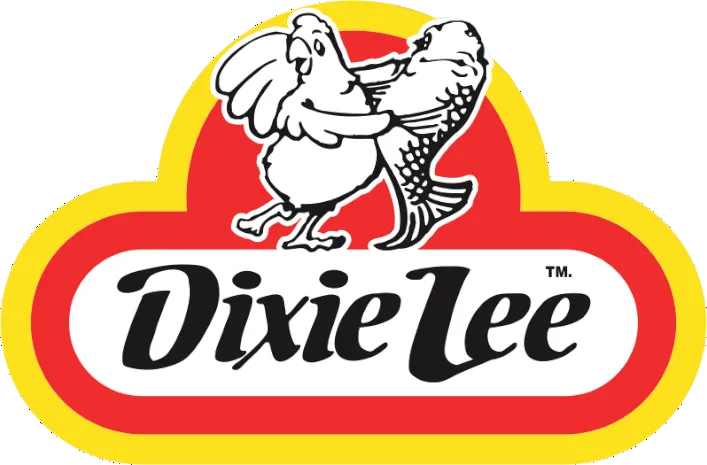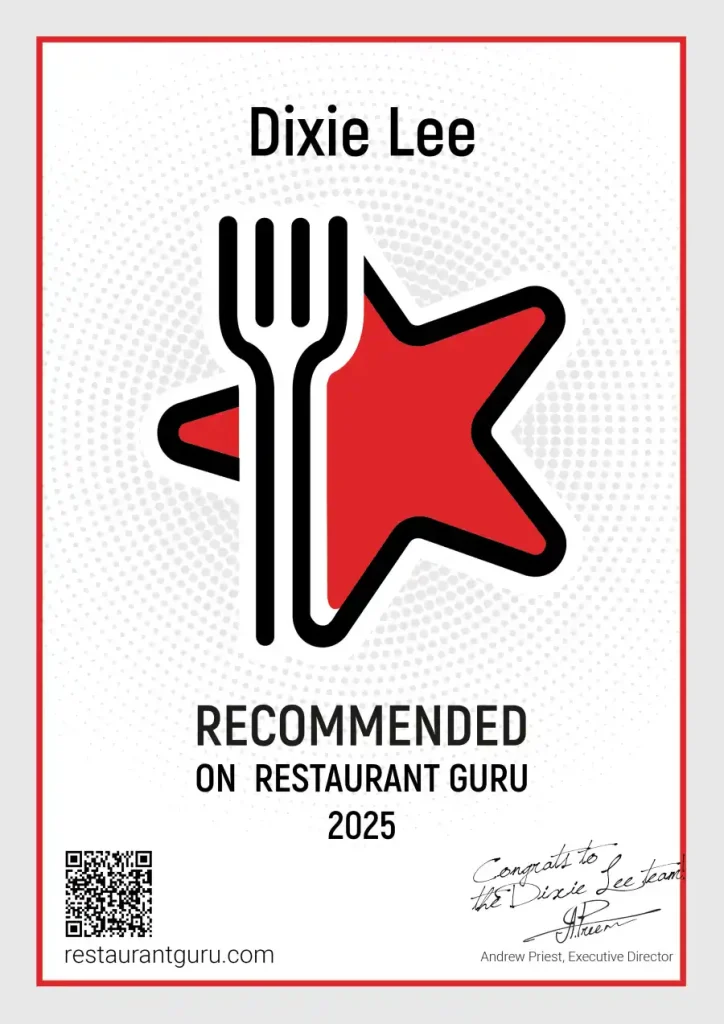Sylvan Lake’s young, family-oriented population and strong summer tourism create favorable conditions for a Dixie Lee Fried Chicken franchise, provided off-season cash flow is managed proactively.
Market and site considerations (third person)
- Demographics: The town’s concentration of young families supports demand for value-priced family meals and kid-friendly menu items. Seasonal tourism adds a significant temporary population spike that boosts peak-period sales.
- Location factors: High-visibility sites with convenient drive-thru access typically capture the greatest share of quick-service traffic, particularly in markets with strong summer visitation. Foot-traffic corridors and proximity to family destinations increase impulse visits during peak months.
- Demand variability: Sales are likely to fluctuate by season, day of week, and weather. Restaurants in similar seasonal markets see higher volumes during summer weekends and holidays and reduced traffic during colder months and weekdays.
Operations and financial controls (third person)
- Cost control: Standardized suppliers, strict inventory management, and waste-control procedures help stabilize margins in environments with variable demand. Forecasting should include seasonally adjusted labor and food-cost assumptions.
- Staffing: Cross-training employees increases scheduling flexibility and keeps service levels consistent during peak and slow periods. Recruiting ahead of the opening reduces training time and helps maintain staffing stability through the first critical months.
- Menu strategy: Emphasizing consistency in core fried-chicken quality, packaging family packs, and offering value-priced combos supports repeat visits and broad appeal.
Recommendations for the reader (second person)
- Choose a visible, drive-thru-capable site and validate traffic counts for both summer and off-season periods. A location that captures both local routines and tourist flows will maximize year-round revenue.
- Build conservative financial models that stress-test off-season scenarios. Plan reserves or supplemental local marketing to sustain cash flow during slower months.
- Focus on operational consistency: standardize suppliers, implement waste controls, and cross-train staff to maintain product quality and service speed.
- Differentiate on family-oriented value: promote family packs, combo meals, and kid-friendly options at competitive price points.
- Invest in community partnerships and ongoing local promotions to generate repeat local business outside the tourist season.
With careful site selection, disciplined cost management, and a year-round marketing plan that leans on family value and consistent product quality, a Dixie Lee franchise can perform well in Sylvan Lake despite seasonal swings in demand.
Key Takeaways
- Sylvan Lake’s young, family-forward population fits Dixie Lee’s crispy chicken, family packs, and value-focused menu.
- Strong summer tourism drives peak demand; plan shoulder and winter tiers with resident baseline forecasting.
- High-visibility drive-thru site with 10–12 car stack and smooth right-turn exit is essential for rush throughput.
- Competition leaves gaps in consistent crunch, bone-in availability, and local-friendly hours—areas Dixie Lee can own.
- Seasonal staffing, tight supply-chain controls, and community partnerships can protect margins and build year-round loyalty.
Sylvan Lake at a Glance: Population, Income, and Family Profiles
Start with the basics: Sylvan Lake counts roughly 16,000 residents, skews young, and grows each year as families move in for lakeside living and commuter access to Red Deer. You’re looking at a family-forward town where adults in their late 20s to early 40s dominate. Households often include kids, and many parents work in trades, energy, healthcare, retail, and services.
Median household incomes sit around Alberta’s mid-range, with a solid middle class and pockets of higher earners. You’ll also find budget-conscious renters and newcomers building roots. Weekday routines revolve around schools, sports, and quick meal solutions. Evenings and weekends lean toward convenience dining after activities. If you’re sizing up a franchise fit, this mix favors approachable pricing, family bundles, online ordering, and reliable takeout speed.
Summer Surge vs. Off-Season: Modeling Demand Fluctuations
Although the year-round base is steady, Sylvan Lake’s demand spikes sharply from late May through August as tourism swells the population several-fold, then tapers through shoulder seasons and winter. You should model weekly sales using three tiers: peak summer, shoulder (September–October, April–May), and off-season. Start with your resident demand baseline, then layer a visitor multiplier for summer and a modest premium for shoulder months.
Use a simple forecast: forecast = resident baseline × seasonal multiplier × day-type factor. Apply higher multipliers to weekends and event days. Track weather, festivals, and school breaks; they shift same-week demand. Plan labor and inventory to match the curve: expand staffing, fryers, and delivery windows in summer; streamline menus and supply drops in winter. Recalibrate monthly using POS data.
Traffic Flow and Site Visibility: Picking the Right Corner
You need a corner with high-visibility intersections so drivers spot you at a glance. Map peak-hour traffic patterns to guarantee easy right-in/right-out moves and minimal congestion. Plan the drive-thru access layout to ascertain queue spillover and keep order times tight.
High-Visibility Intersections
Few decisions influence a quick-service launch more than choosing a high-visibility corner with strong, predictable traffic. In Sylvan Lake, you’ll win attention by prioritizing intersections where drivers naturally slow, sightlines stay clear, and signage pops without clutter. Look for multi-approach views, safe left-turn access, and signalized corners that normalize stops. Validate counts from recent municipal data, then confirm with on-site observation. Align building orientation so your storefront faces the heaviest approach and your pylon sign meets driver eye-height.
| Criterion | What to Check | Why It Matters |
| Signalization | Full signals, turn phases | Predictable pauses augment impressions |
| Sightlines | Unobstructed 300–500 ft | Earlier notice increases intent |
| Corner geometry | Wide radii, stacking | Smoother entries, fewer delays |
| Access | Two curb cuts, right-in/right-out | Faster circulation, safer flow |
| Sign zone | Height, illumination | Legible branding at speed |
Peak-Hour Traffic Patterns
When rush periods compress demand into tight windows, your corner has to catch eyes and convert fast. You’re aiming to intercept routines, not create detours. Track morning and late-afternoon flows along Lakeshore Drive and Highway 20, then map which approaches queue longest and where drivers actually look while waiting. Corners with stacked eastbound traffic during school drop-off or westbound commuters at dusk give your signage more impressions per minute.
Study signal timing and turn phases. If left turns back up, you’ll get captive attention; if green waves push cars through, exposure plummets. Note pedestrian surges near beach access and rec centers; foot traffic adds walk-up potential and social proof. Finally, confirm seasonal swings—summer festivals, ice-fishing weekends—so your peak plan aligns with Sylvan Lake’s rhythms.
Drive-Thru Access Layout
Think of the drive-thru as your profit engine: design it to pull cars in smoothly, keep them moving, and push them out safely without clogging the corner. Choose a right-hand entry from the feeder street, stacking for 10–12 cars, and a bypass lane so blocked orders don’t stall flow. Place the menu board before the tightest turn; angle the pickup window to align mirrors and reach. Keep exits right-turn-only onto the less congested street to avoid backups on Lakeshore Drive.
| Element | Target | Why it matters |
| Entry/Stack | 10–12 cars | Absorbs peaks without spillback |
| Bypass Lane | Continuous | Lets delays exit cleanly |
| Ordering Sightline | 120–150 ft | Early decisions, fewer hesitations |
| Exit Control | Right-turn-only | Faster gaps, safer merge points |
Prioritize clear signage, night lighting, and snow storage zones.
Competitive Landscape: Who’s Frying Nearby?
Start by mapping the fried-chicken and quick-serve players already circling Sylvan Lake and nearby Red Deer. You’ve got KFC anchoring legacy demand, Mary Brown’s pushing Canadian comfort, and Popeyes drawing spice-seekers with late-night traffic. A&W, McDonald’s, and Dairy Queen chip away with chicken sandwiches and family bundles, while local pubs and gas-station kitchens capture convenience-driven bites. In Red Deer, stronger density raises ad noise and coupon wars that spill into Sylvan Lake on weekends and summer peaks.
Assess each rival’s strengths: drive-thru speed, delivery coverage, family packs, app loyalty, and limited-time flavours. Note price tiers, combo value, and portion sizes. Identify gaps in consistent crunch quality, bone-in availability, and smaller-town-friendly service hours. This snapshot shows where you can compete—without duplicating the crowd.
Brand Fit: Dixie Lee’s Value Proposition for Local Tastes
You want a brand that hits Sylvan Lake’s cravings without straying from familiar comfort. Dixie Lee’s chicken, seafood sides, and family bundles can match local tastes while keeping choices straightforward. If the price points fit weeknight budgets and game-day orders, you’ll see strong trial and repeat visits.
Menu Aligns With Preferences
Chances are, Sylvan Lake’s tastes line up neatly with Dixie Lee’s core strengths: crispy fried chicken, family-friendly combos, and wallet-conscious value. You want comfort classics with a few local twists, and the menu can meet that. Go for bone-in chicken, tenders, and sandwiches; add shareable sides like gravy fries, creamy slaw, and biscuits. You also expect lighter options—grilled chicken salads or baked tenders—without losing flavor. Kids’ portions and sauces that balance sweet heat with prairie-friendly mildness help you mix and match.
| Preference | Dixie Lee Item | Why It Fits |
| Familiar comfort | Bone-in chicken | Crunch, seasoning, consistency |
| Shareable meals | Family buckets | Easy for lake outings |
| Lighter picks | Grilled salad | Balanced, not bland |
| Regional nods | Honey-garlic sauce | Mild sweetness, broad appeal |
Pricing Suits Local Budgets
For a town that watches value as closely as flavor, Dixie Lee’s price point hits the sweet spot. You want meals that feel generous without draining your wallet, and Dixie Lee builds bundles that do exactly that. Family boxes, mix-and-match sides, and affordable add-ons let you feed a crew or grab a solo combo without regret.
You also expect consistency. With clear, tiered pricing, you can predict the bill before you order. Daily specials and limited-time offers give you variety while keeping costs steady. If you’re comparing to local diners or national chains, Dixie Lee competes on portion size and beats many on sides and sauces.
In short, you get crisp chicken, reliable portions, and a tab that respects Sylvan Lake budgets.
Staffing Realities: Recruiting and Retaining a Seasonal Team
Although Sylvan Lake hums in summer and quiets by late fall, a Dixie Lee franchise lives or dies on how well you build and keep a seasonal crew. Start recruiting early—March for summer—and tap local schools, hospitality programs, and returning staff. Write clear roles, hours, and pay ranges, and highlight fast training and predictable schedules. Offer modest retention bonuses tied to season completion and referral rewards before July long weekend.
Cross-train every hire so you can cover rushes and vacations. Use short, structured training with checklists and on-the-line coaching. Publish schedules two weeks ahead and allow shift swaps through an app. Recognize performance publicly, and give path-to-lead pay bumps. Exit-interview every seasonal worker and invite high performers to pre-signed return offers.
Supply Chain and Operations: Ensuring Consistency and Cost Control
Because margins tighten in resort towns once summer fades, you need a supply chain that keeps Dixie Lee’s flavor consistent while protecting cash. Standardize specs for chicken, oil, breading, and sides, and lock them in with approved distributors. Use demand forecasts tied to weather, events, and historical POS data to time orders and avoid spoilage. Negotiate tiered pricing and fuel-surcharge caps; align deliveries to fewer, fuller drops.
Install batch-cooking guides, fryer calibration logs, and yield targets to control waste. Track key metrics daily: food-cost percentage, variance by item, and prep-to-sales ratios. Build a backup supplier for poultry and packaging to hedge shortages. Rotate inventory FIFO, label prep times, and audit cold-chain temperatures. You’ll protect consistency, speed, and margin.
Partnerships and Community Integration: Building Loyal Foot Traffic
Start by rooting Dixie Lee in Sylvan Lake’s daily life, not just its summer rush. You’ll build loyalty by showing up where residents gather: schools, minor hockey, farmers’ markets, and lakefront events. Sponsor team meals, offer fundraising nights, and provide teacher and first-responder specials. Keep it simple: a quarterly community calendar, a small sponsorship budget, and clear offers drive predictable foot traffic.
Partner with local suppliers for honey, buns, or sauces to localize the menu and spark esteem. Cross-promote with coffee shops or breweries—bundle game-day boxes or lake picnic packs. Invite service clubs to host meetings in your space on slower nights. Track redemptions from each partnership, then double down on what converts. When you support locals, they’ll support you year-round.
Conclusion
Bottom line: Sylvan Lake can support a Dixie Lee if the business plans for seasonality, selects a high-visibility site, and leans into family-friendly value.
When assessing viability, consider local traffic patterns, peak tourist months, and off-season population changes. Operational resilience depends on tight processes, cross-trained seasonal staff, and reliable supplier agreements that account for fluctuating demand. Differentiation from nearby competitors should focus on a concise menu of craveable staples, consistent quick service, and active community partnerships that build goodwill and repeat visits. Pricing must reflect local income levels and competitor positioning; marketing should target tourists during high season and residents year-round. Establish measurable weekly KPIs for sales, traffic, labor cost, and inventory turnover so the business can convert summer spikes into sustained year-round loyalty.


